Sunburn
During hot and dry climate all plants suffer from sunburn. In today’s agriculture conditions, there are several cases of sunburn damages prevailing in large number of orchards, where plant geometry, crop regulation management are being regularized by training and pruning. Its utmost necessary that the grower needs to be vigilant and aware during different orchard management practices.
Many plants suffer from sunburn during high temperatures but invariably, some survive due to plant geometry, some due to plant population.
In certain plants, human intervention helps overcome the sunburn.
Damage due to heat can be seen in different stages of plant growth which may become fatal to plants in these stages of growth & development.
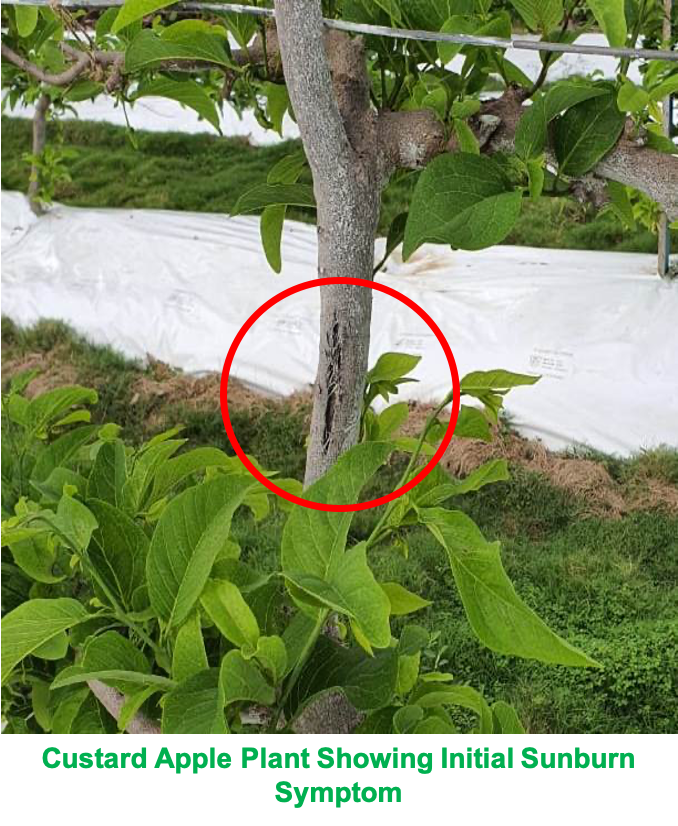
Sunburn is very common on fruits as well, when these fruits are exposed to direct sunlight during high temperature/high radiation.
Principle
Many experiments and experiences have shown that sunburn usually takes place when the temperature rises above 35°C. When the plants are devoid of foliage, for example in custard apple usually growers prune the crop to regulate flowering during hot month of May. In, most part of Central India in summer’s maximum temperature may rise between 38 – 48°C.
Now, while we observe the movement of the sun which is from east to west, during afternoon the radiation and temperature will be high in comparison to period before noon. Therefore, the effect of combination of high temperature & radiant heat, will be more on those plant parts which are exposed towards the direction of west & south west.
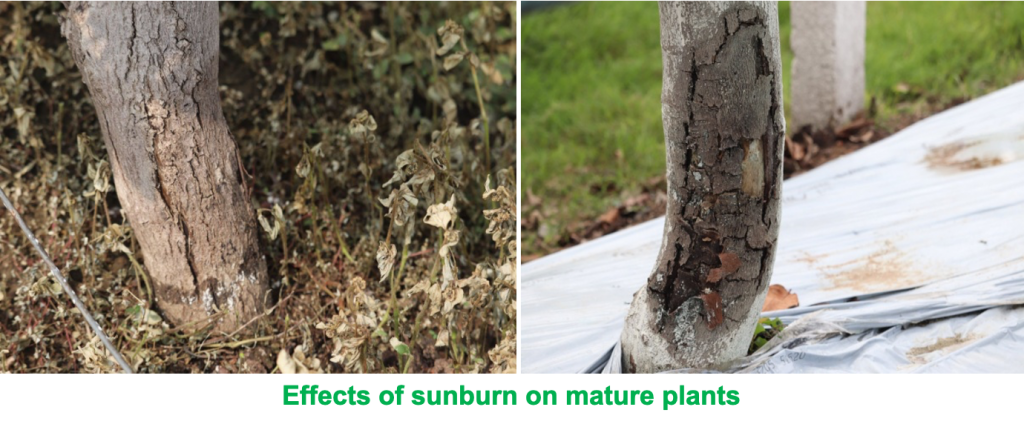
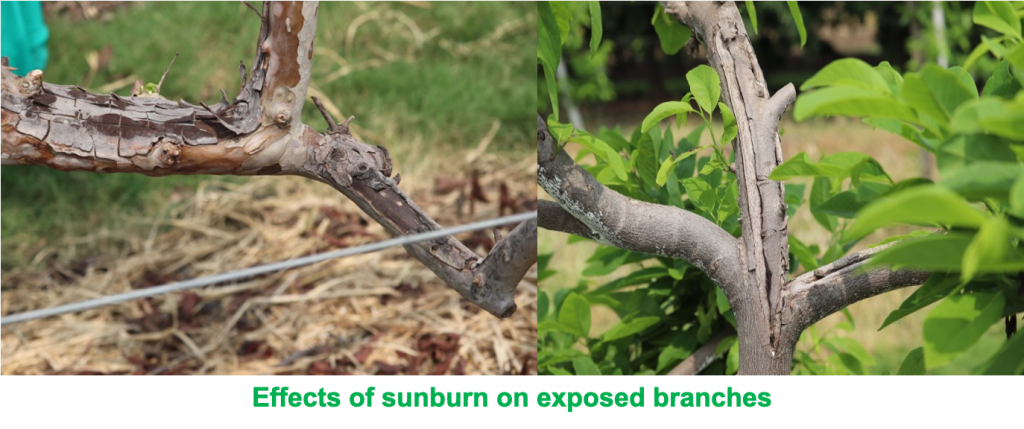
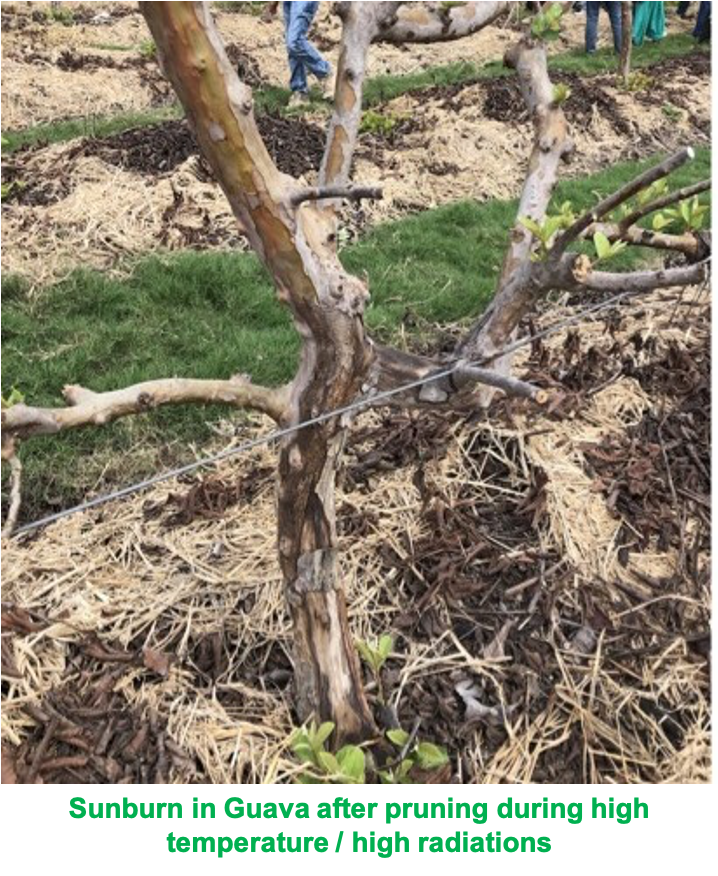
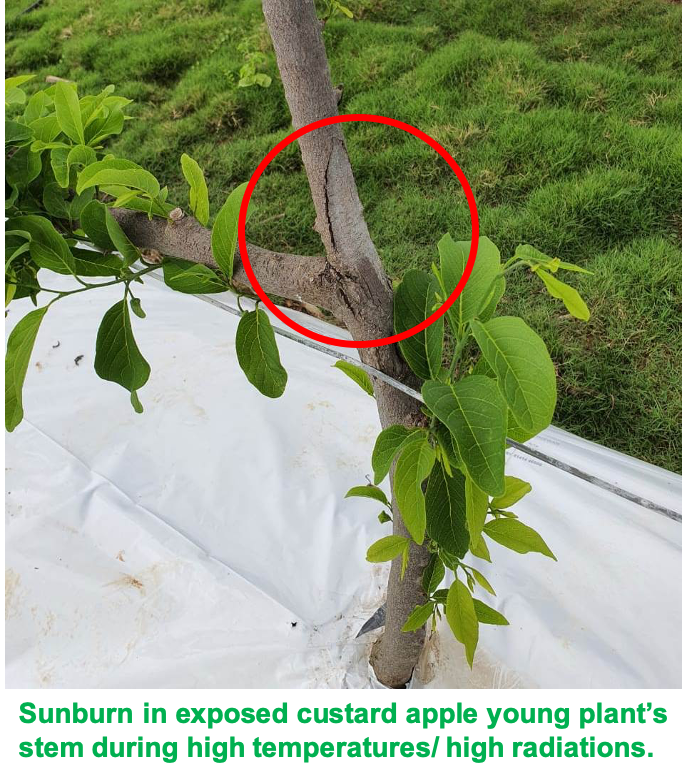
The plants pictures presented here, belongs to orchard where the orientations of the beds are in North South directions whereas the sunburn effects are visible on west & south west direction.
Effect on Foliage
Mild sunburn effects are not noticeable until the plant starts wilting its foliage. In cases where the intensity of sunburn is more than the stem portion starts getting cracked up usually on the above-displayed location which are easily visible. Once the plants are exposed to sunburn then it turns weak, reason being disturbance in its xylem & phloem vessels, leading to plants being deficient of necessary nutrition which may result in fatality. Again, the tissues which are ruptured due to sun burn, than secondary infection of pest and diseases will impact. The root system too gets devoid of food material which hampers its physiological processes and invites various soil-borne diseases.
To identify a sunburn problem, look for damaged tissue at the base of the trunk. Using a sharp knife – at the point of damage, remove a very thin layer of the bark tissue from the trunk.
If the color of internal tissue underneath is brown, than it is an indication that the trunk has been impacted with sunburn. The internal tissue will always be green and above the sunburn section.
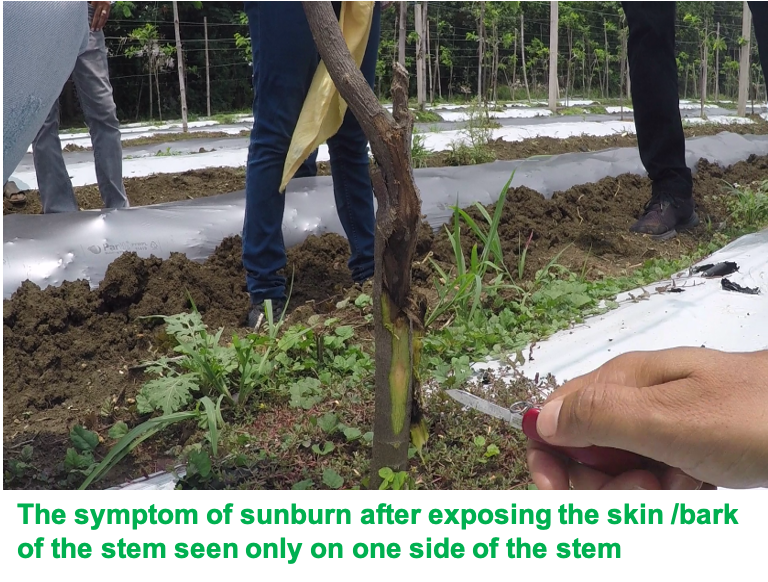
The symptoms of sun burns are confusing to that of many diseases/ disorders
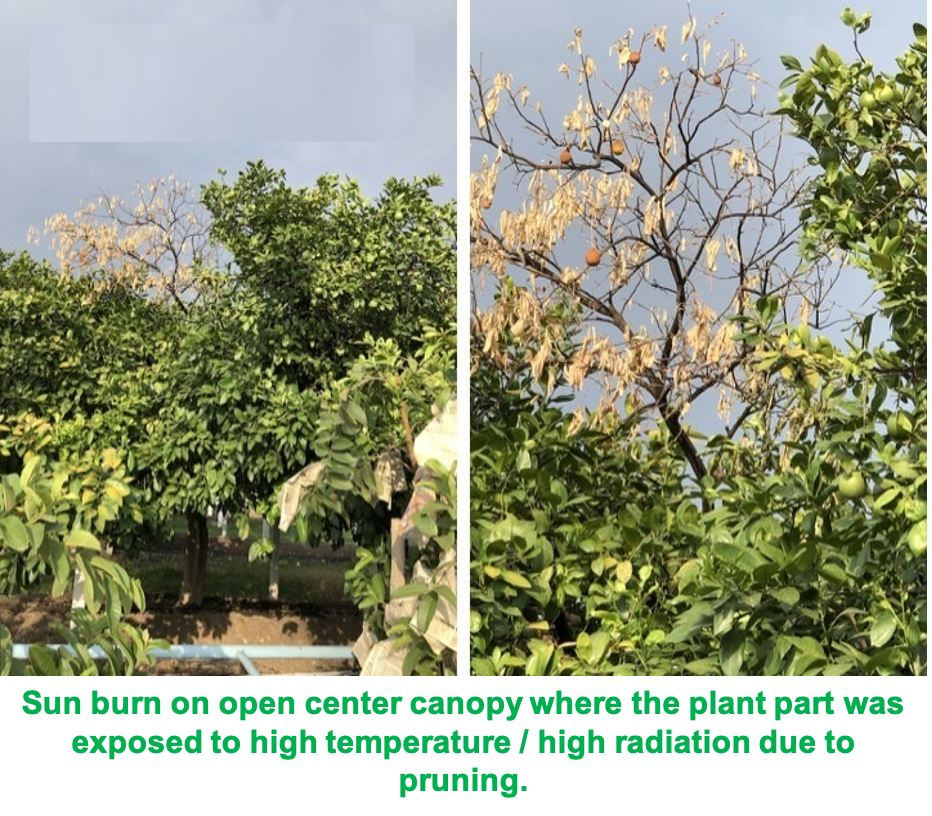
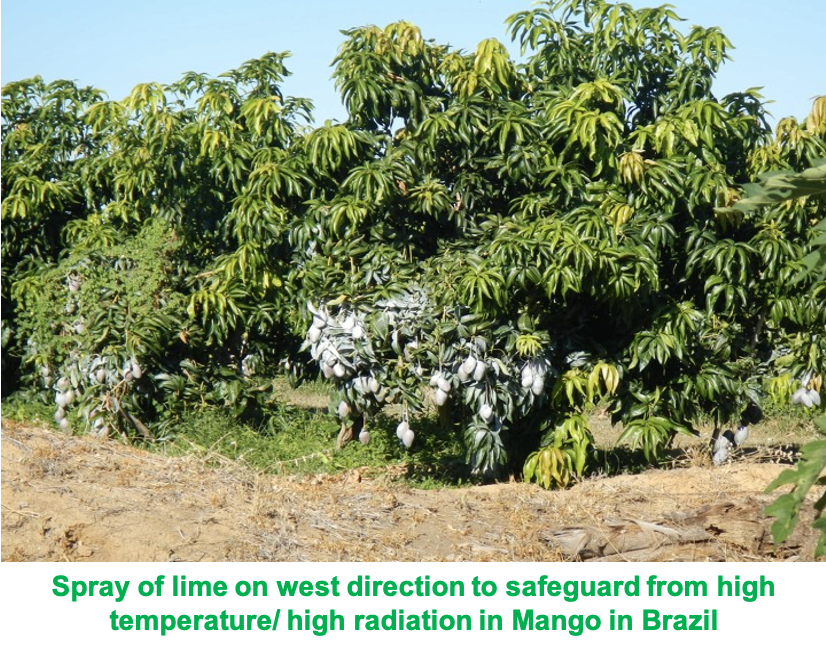
Effect on Fruits
Sunburn damages the fruits in all stages of its development. A sudden change in temperature may result in the mummification of fruits in Custard apple after the pollination/fruit set. In mango, due to heat radiations, a malady spongy tissue is being reported. In guava, the skin of the fruit becomes brick red and starts deteriorating from that point. Likewise, mostly all fruits get hampered due to high sun exposure. In mature fruits, it becomes unmarketable as it deteriorates its appearance and taste.
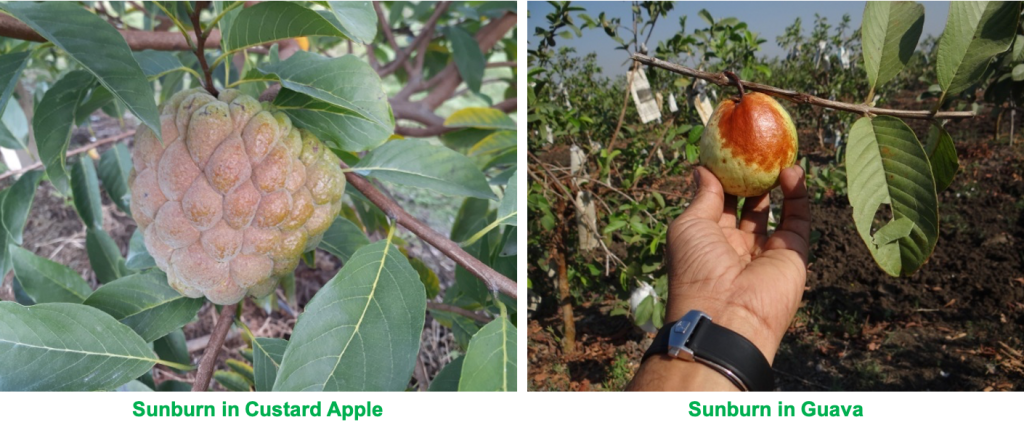
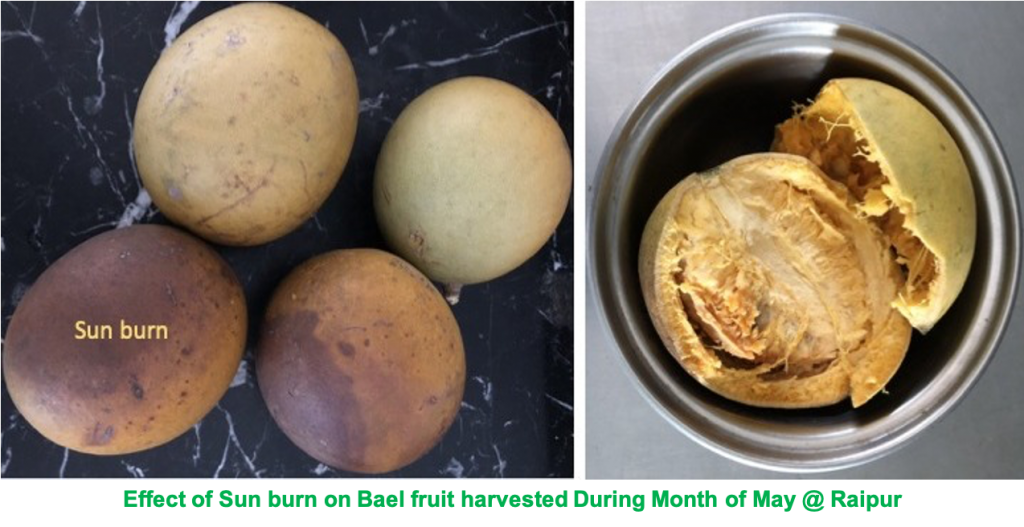
Protective Measures
On Foliage-
During hot weather conditions, the temperature is extreme and the wind blow is hot. This high temperature can be fatal for all living beings. Plants too respond to this stimulus in different ways until they are capable to handle the stress. Once the forces of nature are strong the plants give up its resistance and start showing its impact on its parts. So to safeguard our plants from such stresses we will discuss the processes involved in such a situation.
– Effect of high temperature/ high radiation and heat waves on plants of age 0-6 Months.
The leaves of young plants droop and wilt.
Suggestions
One should always water and facilitate irrigation as the evapotranspiration will be more during high temperature / high radiation. So, growers should irrigate plants in a calculated and regular basis.
Always check the moisture of the soil by digging up the soil a bit and check the moisture below, if it’s dry irrigate immediately.
Young plant can be covered with jute bags or shade net from two directions and top. Two directions should be open – North & East side.
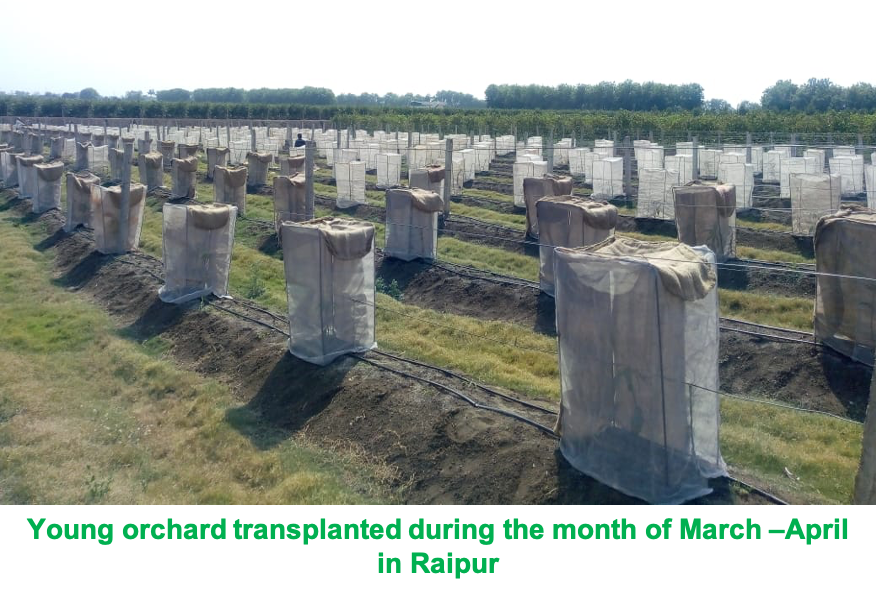
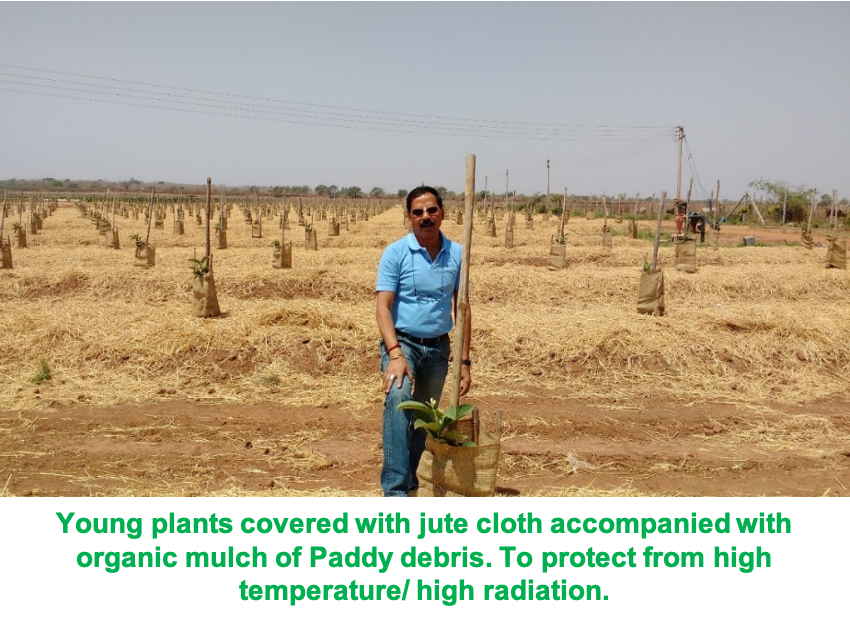
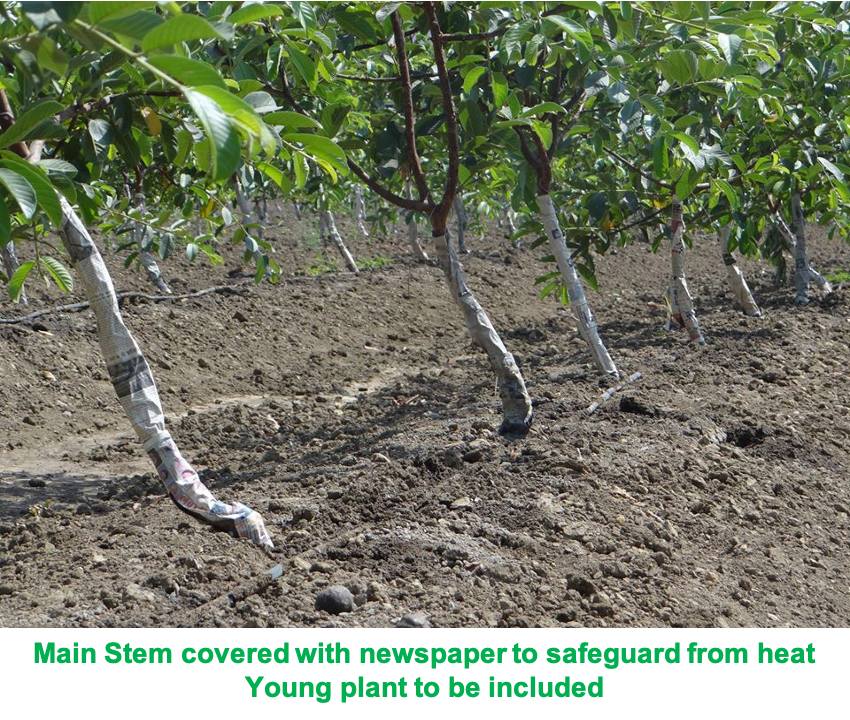
Plants Aged 6 Months – 2 years
- This is a period where growers are suggested to give training and pruning to maintain the good canopy and shape of the plant.
- So, when we give shape to the plants and pruning is done sometimes the time of pruning may coincide to that of high temperature months/ radiation (April – May & September)
Suggestion
Avoid defoliating during high temperature & high radiation. It is advised to prune plants after pre monsoon showers when temperature falls down. Safeguard the plants by painting the exposed plant parts with suitable paints of which the details are discussed below –
Method of making paint for plants –
- Mix 5 Kg of Lime in 10 liters of water and leave overnight (12 hours).
- Mix 5 kg of blue copper in 10 liters of water in the other vessel and leave it for 12 hours. After that, mix the solution of both the buckets well together and paint the plants.
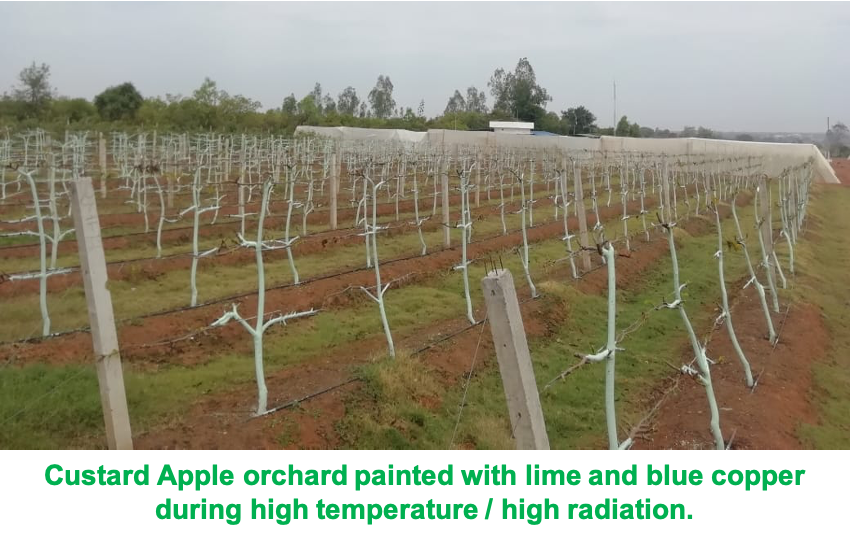
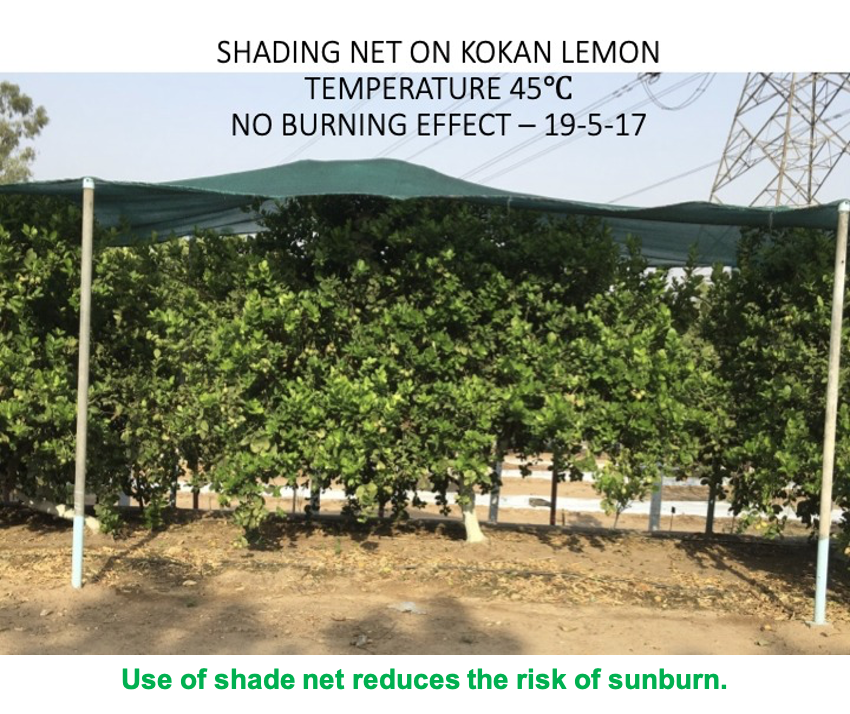
On Fruits
One of the solutions for safeguarding the crop from sun burn is to cover the fruits with different bags. It can be made of paper, cloth, any fabrics, nets etc.
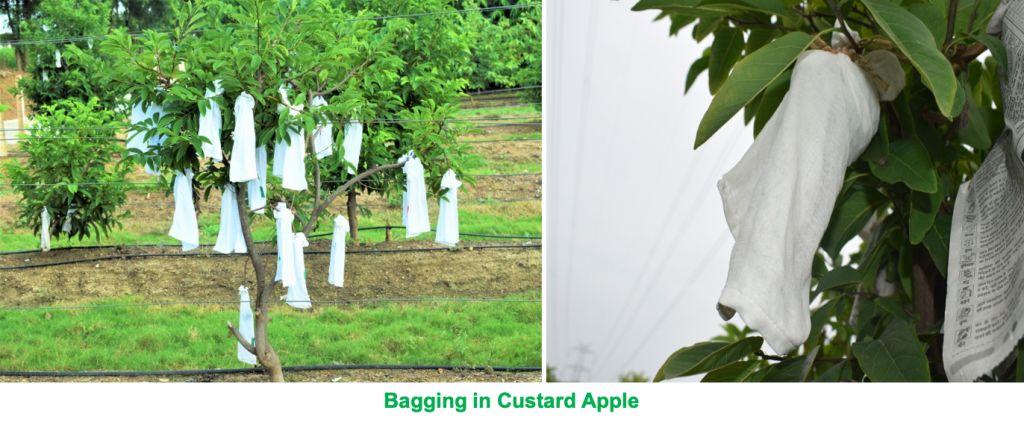
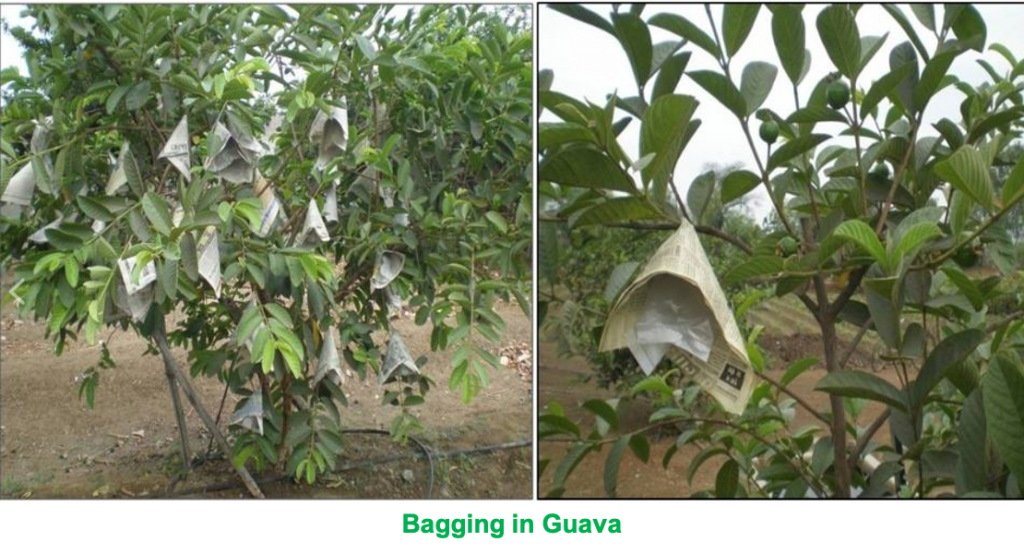
Conclusion
-
Try to reduce soil temperature with the help of organic mulching during the high temperature/ high radiation months. If plastic mulch is used then it too should be covered with field debris like paddy straw or corn stalks etc. as plastic mulch will increase heat and soil temperature.
-
Paint exposed plant parts with copper and lime mixture.
-
Wrap the exposed stem with the help of a newspaper.
-
Avoid pruning during the high temperature/ high radiation months. If pruned paint the exposed plant part. Try to keep little foliage on the plant instead of completely removing the foliage.








